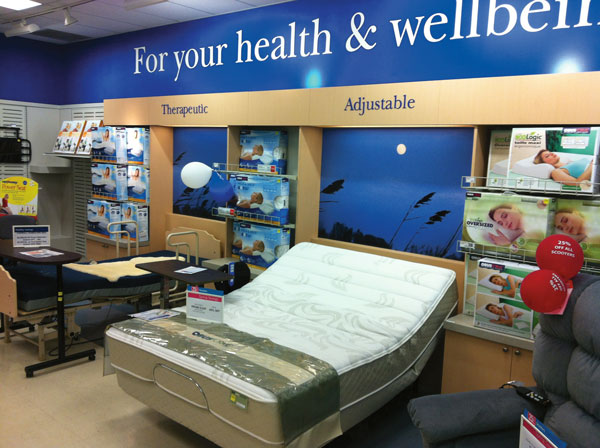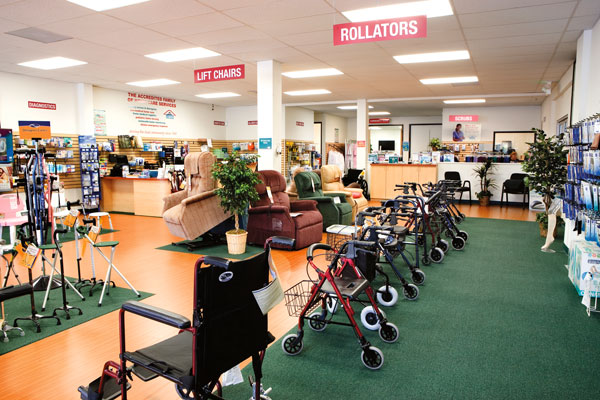I receive weekly e-mails and calls from home medical equipment (HME) providers who want to become retailers. Unfortunately, most of them are not successful in this niche because they fail to understand that they must adopt a new and different business model. Thinking retail is not natural if you operate a traditional reimbursement-driven HME business. The following questions should be taken into consideration:
- How do retail HME businesses operate differently than traditional models?
- How can you convert Medicare patients into retail cash customers?
- What changes need to made when transitioning into retail?
- How can you attract new customers and sales on a daily basis?
The following article will provide you with important guidelines to follow when transitioning into retail HME.
Location, Location, Location
Retail businesses offer physical locations that are highly visible, easily accessible and convenient. They are easy to see and pull into, and they provide an easy shopping experience in which it’s easy to park near the entrance, check out and exit. Just visit any national retail chain, fast-food franchise or chain drug store location to see how these components fit and flow together.
Warehouse vs. Retail
In contrast, traditional HME businesses are usually hidden within commercial areas or industrial parks where they benefit from paying low warehouse rental rates. Even armed with a GPS, most retail customers couldn’t find their locations easily.
If your business is far away from other retail businesses, then you will never benefit from impulse customers who happen to drive or walk by your location. You must spend significant sums of money to attract consumers to your location via continuous advertising that is usually more expensive than the gross sales you generate. Translation: if you’re not in an accessible location, retail will be a money-losing proposition for you.
I was recently asked during a presentation by a traditional HME provider if I could help them convert the 200 square-foot office area in the front of their warehouse into a retail showroom. When I politely explained why the answer was “no” at their current location, they still did not understand why they would not be successful in retail. Please remember the above differences between our two business models before you jump into retail.
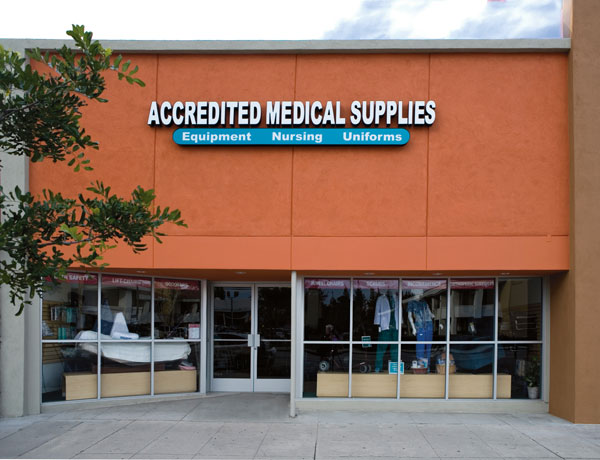
Follow the Chains
Aside from visibility, another way to attract customers to a retail HME business is to locate adjacent to or nearby a related business such as a chain drug store, a major shopping center, a hospital or a medical center. Any of these health-related businesses translates into a 10-20 percent conversion of their customers and patients becoming your HME customers, and at no additional cost other than your retail rent.
Negotiating Retail Rents
Retail space does cost more than industrial or commercial space. As a result of the recent recession the average strip mall space has dropped to $1.60-$2/sq. ft/mo., in contrast to warehousing, which still averages $.50/sq. ft./mo. These prices are usually available only on a three-year minimum lease, and they are often offered in conjunction with one or two months of free rent for build-out and all or part of the tenant improvement build-out costs, as well.
Plan accordingly by using your retail location for selling only—i.e., generating your highest return via retail sales—not as office or warehouse space. These activities include a showroom, a customer service area that’s located front and center, a fitting room for privacy and minimal storage. For all nonretail functions—such as rental equipment, warehousing, intake, billing and delivery—use a garage, warehouse or other location that is priced accordingly at industrial or commercial rates (see the “Hub and Spoke Retailing” section).
Location Issues
When considering location, ask yourself the following questions: Is your sign visible from the street, and do you have “medical equipment,” “home-care products,” “medical store,” or some other variation of HME in large, easy-to-read letters in your tagline? Note that in new retail businesses, what you do/sell is more important for attracting new customers than what your name is, or what your logo looks like. Do you have HME wall paintings or graphics, photographs, window film, or actual products on the front of your building to instantly tell potential customers what products you sell? Do you have enough parking spaces reserved for your customers, and do you have a parking space for physically disabled drivers adjacent to your front or rear door? Do you have automatic front doors, or at least an extra-wide entry door, and do you utilize your front windows for display?
The HME Retail Showroom Display
An HME retailer devotes half or more of their total space to a showroom that prominently displays their product selection. Not rows of the same models or of rental equipment, and not row upon row of gondola shelving. Simply create a wide-open showroom floor that highlights your core categories with a wide selection of respective core and related products within each category. Take the products out of their boxes, plug them in if appropriate and group them together in categories with their respective signs hanging overhead to generate higher sales.
Show More, Sell More
Strange as it may sound, the more you display of any given product category, the more you will sell in a retail HME operation. Whether you are selling wheelchairs, rollators, beds, lift chairs, CPAP or orthopedic
supports, it doesn’t matter what the product is as long as you create a destination in that respective category. When you feature a majority of the product vendors, models and available options, you are making a visual statement to your customers that you are the experts and specialists in this category. Become the Toys “R” Us of HME and own the category in your town.
The BB&B of HME
When designing your new showroom visualize a combination of Bed Bath & Beyond, Brookstone, a new car showroom and a high-end department store. The front third of your retail showroom will account for 80 percent of your sales, so identify and display in depth and breadth your core profit centers that cater to your primary customer demographics. Within each core category display one example of the core product “fully loaded,” with every accessory that you carry to maximize sales per customer.
Display related and add-on products adjacent to these core products to generate cross-selling and up-selling. Create room sets such as bedrooms, bathrooms and living rooms to sell multiple products per customer by visually demonstrating how HME products are utilized together to help improve the end user’s daily quality of life at home.
The Value of Showroom Windows
Your windows are silent salespeople that sell 24/7 for you. If your windows never change, people passing by will stop looking at them. Rotate products on a monthly basis at a minimum, and use risers and halogen lighting to make products more visible. Use mannequins to display orthopedic supports, compression stockings, scrubs and diagnostic products, and use electric timers to display lift chairs rising and reclining. Display big-ticket products such as lift chairs, scooters, transport chairs and rollators.
Merchandise to Sell
The key to successful sales, turns and profits is matching the HME categories with your customer demographics. There is no “one size fits all” for a retail showroom. Given the high costs of retail space and relatively large inventories needed, HME retailers can no longer afford to stock every product. Stock the products your loyal customers buy on a repeat basis and any other products that might also appeal to their needs and values.
Demographics Dictate Products
Baby Boomers who buy diabetic supplies on a monthly basis would also buy diabetic shoes, socks, skin care, compression stockings and blood pressure monitors. Female seniors who buy incontinence products need mobility and bathroom safety products as well. Patients needing a hospital bed or oxygen setup will also need mobility, stand-assist and bath safety products, plus ADLs (aids for daily living). Young families tend to buy pediatric asthma, maternity and child safety products.
Is Chrome Retail HME?
Another question I am always asked during seminars involves whether there’s any difference between a provider displaying chrome or anodized colored HME. I cannot emphasize the difference enough! Chrome canes, crutches, walkers, transport chairs and wheelchairs are Medicare reimbursable items, plus they still have a stigma attached to them as they look like clinical products that you would receive in a hospital. In retail HME, these products do not belong on the showroom floor. Retailers display colored aluminum as upgraded—and more expensive—lifestyle products that sell for cash. Why take up valuable showroom display space on reimbursable products that net minimal profit?
According to Medicare, a Part B provider only needs to designate a minimum of one product that meets any given reimbursable category description. Other similar products with different features and benefits and manufactured by other vendors can simply be designated by the provider as upgrades, with the ABN (advance beneficiary notice) used at the time of sale accordingly.
Good, Better, Best
What do traditional reimbursement HME businesses, chains and mass merchandisers have in common? Usually they will only stock one SKU (stock-keeping unit) per product category. But if you do not offer feature, benefit and price options, customers will leave your store and shop at your competition in order to be able to compare products on the shelf and then make their purchasing decision. Not only do you lose the sale, but possibly the lifetime value of that HME customer—and their family, as well.
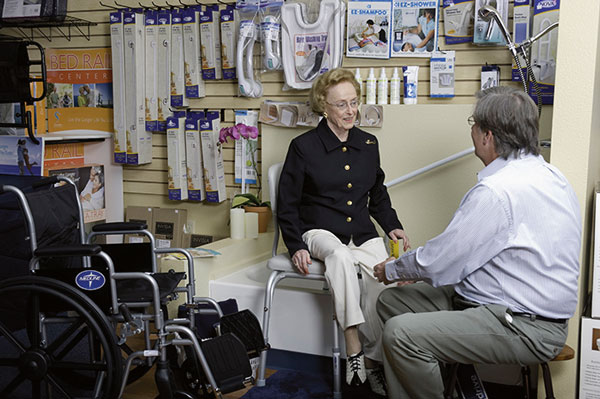
Retail businesses usually display a good/better/best product offering in order to give Baby Boomers the choices they demand and close sales in their store at the shelf level. Retail HME businesses usually display at least a basic model and one upgraded model for most products and display the good/better/best options within all of their expanded core profit categories.
Room Sets Sell
No one needs only one grab bar at home. HME retailers visually educate their customers by displaying all of the patient room and bath safety products on the floor in room sets. When a customer can walk into a model bedroom or bathroom on the showroom floor, they will see and then buy the products that they or their loved one at home will need to be independent and improve their daily quality of life. Sell the package rather than a single product. Baby Boomer consumers will not necessarily buy all of these products at once, but they will return over a period of time and eventually buy most of them.
Pricing Products
So many traditional HME providers never place a price on a product they display due to Medicare’s strict rules regarding selling for less than Medicare reimbursement pricing. Medicare requires that the posted price on reimbursable products be at minimum their allowable price, otherwise they can audit you and then charge you back the difference for what you sell the product for and their allowable price.
However, Medicare states that they are aware that billing Medicare costs more than accepting cash for any given product. Therefore, they have never taken action against Part B HME providers that deduct 17-20 percent from the Medicare allowable price for all retail cash sales.
Most HME retailers will post two prices on products, the Manufacturer’s Suggested Retail Price (MSRP) and their price, which on a Medicare product is either the allowable or a price just slightly higher than the allowable. This price shows customers that they are already getting a lower price than what the manufacturer recommends. Then, during a sale they will post a third, or sale price, as well. These retailers also post signs around the showroom stating, “Ask for Our Retail Pricing,” “Ask for Our Cash Prices” or “Ask About Our Sale Pricing.” In this way their customers are informed that there are cash prices available that are lower than the posted Medicare allowable prices.
Just-in-Time Inventory
Take a lesson from Walmart and just replenish what you sell. I have visited too many 1,000 square-foot warehouses that are stocked to the ceiling only to find that the provider’s marketing and advertising monies are tied up in this old inventory. Use a distributor’s warehouse as your own. Every product has a carrying cost attached to it, and the longer it sits in your warehouse, the more it costs you.
Whether you order direct from vendors or from distributors, the inventory goal is what is called “high service levels.” This usually means next-day delivery to replenish your sold products. Do not think that distributors cost too much to take advantage of this service. Although products might cost a few percentages more to purchase, they will turn almost twice as quickly by always being in stock.
Retail businesses cannot afford to be out of stock on their most popular sellers. Why? Because when a customer can’t find the product for which they are searching, they will go elsewhere to shop. If they find and buy the product easily at your competitors, then where do you think they will go the next time they need an HME product?
Automated inventory control software systems are vital in operating any profitable retail business. Depending upon the cost, size and turn of a product, stock two or three units and then automatically reorder when you are down to your last piece. Scan the new products into your system when they are delivered and then have your point-of-sale (POS) system automatically generate a reorder list from daily sales.
Hub and Spoke Retailing
Many veteran Part B providers have expanded into retail HME through a “hub and spoke” system. Their older “hub” locations are still accredited Part B Medicare providers that include warehousing, but their newer retail locations are retail-only cash showrooms that operate for less due to reduced staffing and product selection.
When a Medicare patient inquires at one of their “spoke” retail locations for a Medicare reimbursable item, they are simply redirected to one of the “hub” Medicare locations for billing intake and fulfillment, or the intake can be taken over the phone. The retail locations sell retail products at retail pricing, while the Medicare locations provide, deliver and bill for Medicare reimbursable products. In this way the retail locations do not lose Medicare patients to their competition, so the company benefits from both modes of an HME operation. Plus the retail locations operate “leaner” by simply being staffed by retail salespeople who sell retail products, while all intake, billing, warehousing, delivery, pickup and rentals with dirty and clean equipment is handled by the hub.
Intake vs. Sales
Too often, only one customer service representative (CSR) is working in a retail HME showroom. They must answer the phones, wait on customers and process insurance when necessary. Here are the problems with that set-up:
- The average retail sale takes 20 minutes of uninterrupted time. This translates into the salesperson greeting the customer, helping them find the product(s) they need, demonstrating those products, educating them about other related products that will also help them or their loved ones with a specific medical issue and, finally, cashing out the sale.
- The average insurance intake and documentation takes one hour to process. This means that the sole CSR is losing two other retail sales every hour that they process an insurance patient.
- Given that the average HME retail sale is approximately $150-$200, this translates into $300-$400 lost per hour.
To avoid this loss create a backup system for answering the phones when a customer is in the store. Assign billing staff to process the intake, whether in the showroom or over the phone, and dedicate at least one CSR for retail sales only during all open hours.
Retail CSRs and salespeople know how to sell any products in a retail environment. However, the majority of traditional HMEs simply reassign their intake staff to become CSRs and salespeople. Wrong! Insurance people process scripts; they do not know how to sell. If you want to be successful in retail, hire retail salespeople and teach them about HME.
Gross Sales/FTE/Year
One common benchmark across all industries is the gross amount of dollars generated by every full-time employee (FTE). In HME we cross-train most employees and operate “lean,” resulting in higher dollar amounts per employee. The average benchmark is $150,000/FTE/year for a profitable HME operation generating more than $400,000 annually in gross sales. HME businesses that are completely automated—from handheld scanners for inventory control to POS systems for automatic reordering—are generating up to $200,000/FTE/year in gross sales.
Controlling the Sale
The majority of HME businesses that I visit have one common practice: every customer is asked what insurance they carry as soon as they are greeted. But from the consumer’s point of view, their immediate need is help determining which product or supply is the best to meet their medical needs or those of a loved one. Don’t run the risk of losing your retail customers because you are focusing on your needs rather than theirs.
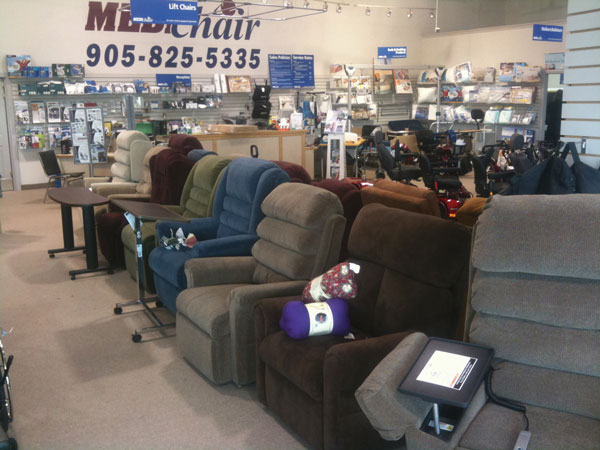
In an HME retail showroom, CSRs view every Medicare and Medicaid patient as a retail sales opportunity. Instead of asking which insurance company covers the patient, they qualify the customer first by asking a few probing questions such as:
- Who is the end-user?
- What is their medical condition?
- Do they have any special health-care needs?
- Do they have any special lifestyle concerns?
Then the salesperson will demonstrate the core and related products that meet this identified health-care need. The resulting sale is usually for one or two products, in addition to the reimbursable product.
For example, every rental wheelchair customer is asked questions concerning the end user’s daily needs to determine if they need related products. These include ramps, cushions (from eggcrate to gel), trays, backpacks, pouches, oxygen tank holders, cane holders, urine collection systems and auto lifts. The result is that every rental—whether for wheelchair, bed or oxygen system—generates from $200-$600 in cash add-on sales.
Selling High
Start by showing customers the most expensive, fully-loaded product, and then work your way down to the basic reimbursable product. Car salespeople are notorious for pushing their “top of the line” vehicles on customers. But even with cars, consumers usually don’t buy the most or least expensive models, but somewhere in the middle. The same holds true for home health-care products. Give customers a choice, starting with the best and working your way down to the basic, and you will find that two thirds to three fourths opt for an upgraded product.
For instance, if someone wants a walker, start by demonstrating rollators first and rolling walkers second. If they shop, they need a basket. If they get tired when they are out, they need a seat to stop and rest. If they like to get their own food or drink at home, then they need a tray and drink holder. And if a senior still insists on their Medicare entitlement, use the ABN to offer them a discount on the upgraded product they liked.
Retailing for Success
Retail HME businesses that walk away from Medicare find their businesses taking off without the associated regulations, headaches and operations expenses. By trying a completely different business model these retailers are becoming boutique retailers that happen to sell HME. Become your community’s HME resource center, retail destination and category killer.
Sidebar: Retail HME ROI Breakdown
The larger your showroom and the more products displayed, the higher your sales and profits.
- 12’ Planogram (linear display on a shelf) = 40% gross profit (GP) = $15,000-$20,000/gross sales/year
- 400 square-foot showroom = 40% GP = $200-$300/square foot/gross sales/year = approx. $100,00-$150,000/year
- 800 square-foot showroom = 45% GP = $400-$600/square foot/gross sales/year = approx. $300,000-$500,000/year
- 1,500 square-foot showroom = 50% GP = $800/square foot/gross sales/year = approx. $1.2 million/year
Sidebar: Retail HME Best Practices
Parameters: 2,500 square feet of space with a 1,500 square-foot showroom at $2/square foot/month rent with dedicated retail staff generating $1 million+ gross sales/year
- Gross Profit Margin (GPM) = 48%
- Cost of Goods (COG) = 52%
- Net = 8-12 % (12-15% if fully automated)
- Full-Time Employees (FTEs) generate $150,000 each in gross sales/year ($200,000/year if fully automated)
- Revenue Mix = 1/3 Medi/Medi, 1/3 3rd Party, and 1/3 Retail
- 1,500 sq. ft. = Average retail showroom size
- 10th-12th month = Break-even for new HME retailer
- $160 = Average retail cash sale
- 2 products per sale = Average retail customer




